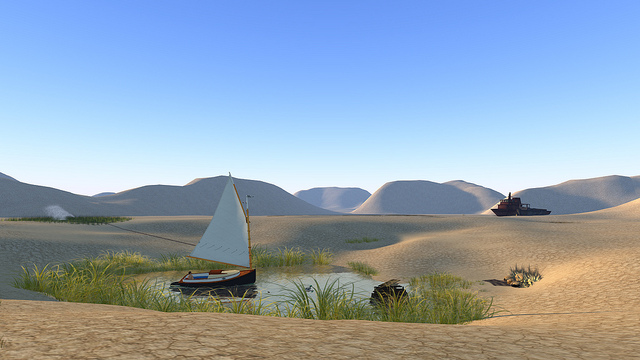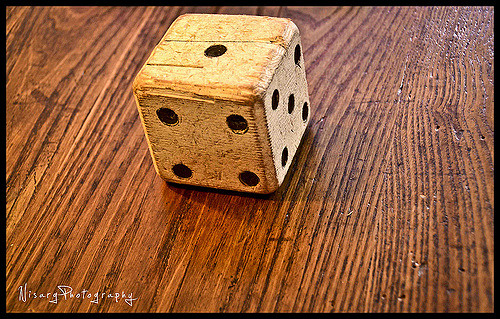Archive for May, 2016
How To Allocate Resources
 How a company allocates its resources defines its strategy. But it’s tricky business to allocate resources in a way that makes the most of the existing products, services and business models yet accomplishes what’s needed to create the future.
How a company allocates its resources defines its strategy. But it’s tricky business to allocate resources in a way that makes the most of the existing products, services and business models yet accomplishes what’s needed to create the future.
To strike the right balance, and before any decisions on specific projects, allocate the desired spending into three buckets – short, medium and long. Or, if you prefer, Horizon 1, 2 and 3. Use the business objectives to set the weighting. Then, sit next to the CFO for a couple days and allocate last year’s actual spending to the three buckets and compare the actuals with how resources will be allocated going forward. Define the number of people who will work on short, medium and long and how many will move from one bucket to another.
To get the balance right, short term projects are judged relative to short term projects, medium term projects are judged relative to medium term projects and the long term ones are judged against their long term peers. Long term projects cannot be staffed at the expense of short term projects and medium term projects cannot take resources from long term projects. To get the balance right, those are the rules.
To choose the best projects within each bucket, clarity and constraints are more important than ROI. Here are some questions to improve clarity and define the constraints.
How will the customer benefit? It’s best to show the customer using the product or service or experiencing the new business model. Use a hand sketch and few, if any, words. Use one page.
How is it different? In the hand sketch above, draw the novel (different) elements in red.
Who is the new customer? Define where they live, the language they speak and how they get the job done today.
Are there regional constraints? Infrastructure gaps, such as electricity, water, transportation are deal breakers. Language gaps can be big problems, so can regulatory, legal and cultural constraints. If a regional constraint cannot be overcome, do something else.
How will your company make money? Use this formula: (price – cost) x volume. But, be clear about the size of the market today and the size it could be in five years.
How will you make, sell and service it? Include in the cost of the project the cost to overcome organizational capacity/capability constraints. If cost (or time) to close the gaps is prohibitive, do something else.
How will the business model change? If it won’t, strongly consider a different project.
If the investigations show the project is worthwhile, how would you staff the project and when? This is an important one. If the project would be a winner, but there is no one to work on it, do something else. Or, consider stopping a bad project to start the good one.
There’s usually a general tendency to move medium term resources to short term projects and skimp on long term projects. Be respectful of the newly-minted resource balance defined at the start and don’t choose a project from one bucket over a project from another. And don’t get carried away with ROI measured to three significant figures, rather, hold onto the fact that an insurmountable constraint reduces ROI to zero.
And staff projects fully. Partially-staffed projects set expectations that good things are happening, but they never come to be.
Image credit – john curley
Channel your inner sea captain.
 When it’s time for new work, the best and smartest get in a small room to figure out what to do. The process is pretty simple: define a new destination, and, to know when they journey is over, define what it looks like to live there. Define the idealized future state and define the work to get there. Turn on the GPS, enter the destination and follow the instructions of the computerized voice.
When it’s time for new work, the best and smartest get in a small room to figure out what to do. The process is pretty simple: define a new destination, and, to know when they journey is over, define what it looks like to live there. Define the idealized future state and define the work to get there. Turn on the GPS, enter the destination and follow the instructions of the computerized voice.
But with new work, the GPS analogy is less than helpful. Because the work is new, there’s no telling exactly where the destination is, or whether it exists at all. No one has sold a product like the one described in the idealized future state. At this stage, the product definition is wrong. So, set your course heading for South America though the destination may turn out to be Europe. No matter, it’s time to make progress, so get in the car and stomp the accelerator.
But with new work there is no map. It’s never been done before. Though unskillful, the first approach is to use the old map for the new territory. That’s like using map data from 1928 in your GPS. The computer voice will tell you to take a right, but that cart path no longer exists. The GPS calls out instructions that don’t match the street signs and highway numbers you see through the windshield. When the GPS disagrees with what you see with your eyeballs, the map is wrong. It’s time to toss the GPS and believe the territory.
With new work, it’s not the destination that’s important, the current location is most important. The old sea captains knew this. Site the stars, mark the time, and set a course heading. Sail for all your worth until the starts return and as soon as possible re-locate the ship, set a new heading and repeat. The course heading depends more on location than destination. If the ship is east of the West Indies, it’s best to sail west, and if the ship is to the north, it’s best to sail south. Same destination, different course heading.
When the work is new, through away the old maps and the GPS and channel your inner sea caption. Position yourself with the stars, site the landmarks with your telescope, feel the wind in your face and use your best judgement to set the course heading. And as soon as you can, repeat.
Image credit – Timo Gufler.
Quantification of Novel, Useful and Successful

Argument is unskillful but analysis is skillful. And what’s needed for analysis is a framework and some good old-fashioned quantification. To create the supporting conditions for an analysis around novelty, usefulness, and successfulness, I’ve created quantifiable indices and a process to measure them. The process starts with a prototype of a new product, service or business model which is shown to potential customers (real people who do work in the space of interest.)
The Novelty Index. The Novelty Index measures the difference of a product, service or business model from the state-of-the-art. Travel to the potential customer and hand them the prototype. With mouth closed and eyes open, watch them use the product or interact with the service. Measure the time it takes them to recognize the novelty of the prototype and assign a value from 0 to 5. (Higher is better.)
5 – Novelty is recognized immediately after a single use (within 5 seconds.)
4 – Novelty is recognized after several uses (30 seconds.)
3 – Novelty is recognized once a pattern emerges (10-30 minutes.)
2 – Novelty is recognized the next day, once the custom has time to sleep on it (24 hours.)
1 – A formalized A-B test with statistical analysis is needed (1 week.)
0 – The customer says there’s no difference. Stop the project and try something else.
The Usefulness Index. The Usefulness Index measures the level of importance of the novelty. Once the customer recognizes the novelty, take the prototype away from them and evaluate their level of anger.
5 – The customer is irate and seething. They rip it from your arms and demand to place an order for 50 units.
4 – The customer is deeply angry and screams at you to give it back. Then they tell you they want to buy the prototype.
3 – With a smile of happiness, the customer asks to try the prototype again.
2 – The customer asks a polite question about the prototype to make you feel a bit better about their lack of interest.
1 – The customer is indifferent and says it’s time to get some lunch.
0 – Before you ask, the customer hands it back to you before you and is happy not to have it. Stop the project and try something else.
The Successfulness Index. The Successfulness Index measures the incremental profitability the novel product, service or business model will deliver to your company’s bottom line. After taking the prototype from the customer and measuring the Usefulness Index, with your prototype in hand, ask the customer how much they’d pay for the prototype in its current state.
5 – They’d pay 10 times your estimated cost.
4 – They’d pay two times your estimated cost.
3 – They’d pay 30% more than your estimated cost.
2 – They’d pay 10% more than your estimated cost.
1 – They’d pay you 5% more than your estimated cost.
0 – They don’t answer because they would never buy it.
The Commercialization Index. The Commercialization Index describes the overall significance of the novel product, service or business model and it’s calculated by multiplying the three indicies. The maximum value is 125 (5 x 5 x 5) and the minimum value is 0. Again, higher is better.
The descriptions of the various levels are only examples, and you can change them any way you want. And you can change the value ranges as you see fit. (0-5 is just one way to do it.) And you can substitute actual prototypes with sketches, storyboards or other surrogates.
Modify it as you wish, and make it your own. I hope you find it helpful.
Image credit – Nisarg Lakhmani
Stop bad project and start good ones.
 At the most basic level, business is about allocating resources to the best projects and executing those projects well. Said another way, business is about deciding what to work on and then working effectively. But how to go about deciding what to work on? Here is a cascade of questions to start you on your journey.
At the most basic level, business is about allocating resources to the best projects and executing those projects well. Said another way, business is about deciding what to work on and then working effectively. But how to go about deciding what to work on? Here is a cascade of questions to start you on your journey.
What are your company’s guiding principles? Why does it exist? How does it want to go about its life? These questions create context from which to answer the questions that follow. Once defined, all your actions should align with your context.
How has the business environment changed? This is a big one. Everything is impermanent. Change is the status quo. What worked last time won’t work this time. Your success is your enemy because it stunts intentions to work on new things. Define new lines of customer goodness your competitors have developed; define how their technologies have increased performance; search YouTube to see the nascent technologies that will displace you; put yourself two years in the future where your customers will pay half what they pay today. These answers, too, define the context for the questions that follow.
What are you working on? Define your fully-staffed projects. Distill each to a single page. Do they provide new customer value? Are the projects aligned with your company’s guiding principles? For those that don’t, stop them. How do your fully-staffed projects compare to the trajectory of your competitors’ offerings? For those that compare poorly, stop them.
For projects that remain, do they meet your business objectives? If yes, put your head down and execute. If no, do you have better projects? If yes, move the freed up resources (from the stopped projects) onto the new projects. Do it now. If you don’t have better projects, find some. Use lines of evolution for technological systems to figure out what’s next, define new projects and move the resources. Do it now.
The best leading indicator of innovation is your portfolio of fully-staffed projects. Where other companies argue and complain about organizational structure, move your best resources to your best projects and execute. Where other companies use politics to trump logic, move your best resources to your best projects and execute. Where other successful companies hold on to tired business models and do-what-we-did-last-time projects, move your best resources to your best projects and execute.
Be ruthless with your projects. Stop the bad ones and start some good ones. Be clear about what your projects will deliver – define the novel customer value and the technical work to get there. Use one page for each. If you can’t define the novel customer value with a simple cartoon, it’s because there is none. And if you can’t define how you’ll get there with a hand sketch, it’s because you don’t know how.
Define your company’s purpose and use that to decide what to work on. If a project is misaligned, kill it. If a project is boring, don’t bother. If it’s been done before, don’t do it. And if you know how it will go, do something else.
If you’re not changing, you’re dying.
Image credit – David Flam
 Mike Shipulski
Mike Shipulski